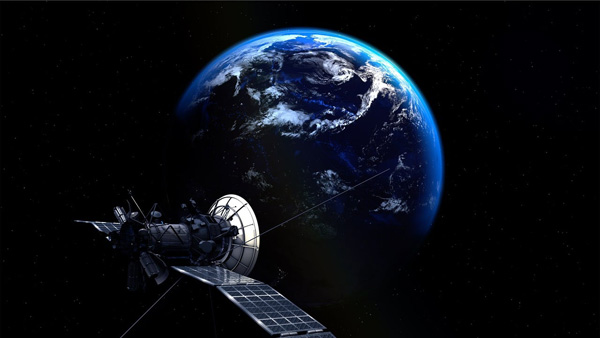Google unveils methane-tracking satellite, a groundbreaking innovation

[Image of a satellite, Credit to Pixabay]
On February 14th, 2024, tech giant Google announced the MethaneSAT project, featuring a satellite designed to collect data about methane levels around the world.
MethaneSAT is an innovative satellite devised from the collaboration of Google and non-profit environmental organization Environmental Defense Fund.
Orbiting 300 miles about the Earth and making 15 orbits per day, MethaneSAT’s software and spectrometers measure different wavelengths of light to detect methane concentrations.
This technology allows for pinpointing concentrated pockets of methane plumes as well as identifying broader areas where the gas has diffused.
Additionally, MethaneSAT incorporates Google’s image detection algorithms to create the first-ever comprehensive, global map of the oil and gas industry’s infrastructure.This includes facilities like pump jacks and storage tanks, which are known hotspots for leaks.
Scheduled for release next month in March, MethaneSAT aims to address climate change with three key features: enhanced coverage and measurement, quicker and most cost-effective employment, and open-access of data, setting it apart from other satellites from the government-space agencies.
Since it is designed and assembled by Environmental Defense Fund (EDF) affiliate MethaneSAT Limited Liability Company (LLC), the satellite will provide global, high-resolution coverage of methane emissions from oil and gas facilities.
It has the ability to detect surface-level emissions from the major human-caused sources, along with the sources relevant to oil and gas infrastructure.
Moreover, the satellite is expected to be less expensive and quicker to launch due to its specialization in measuring a specific type of gas, rather than focusing on a broad range of greenhouse gases.
Lastly, MethaneSAT offers free-access to the data it collects, which differentiates it from large-scale research, space organizations, and private sector business that sell data to the public and commercial sectors.
MethaneSAT, yet, combines the economic advantages of each model and makes its results available to everyone.
For instance, EDF will use data provided by MethaneSAT to better define the extent of the methane challenges from the oil and gas.
In addition, its sources serve as an imperative tool for industry, investors, and regulators to detect problem areas, identify reductions, and measure progress in reducing emissions.
Scientists nominate MethaneSAT as a tool for the solution of methane related problems.
Professor Jackson, an Earth system science expert at Stanford, highly praised the tool, stating, “This tool could solve a significant problem for methane researchers.”
Furthermore, Yael Maguire, vice president of geo sustainability at Google, emphasized the importance of Methane data, stating “We think this information is incredibly valuable for energy companies, researchers and the public sector to anticipate and mitigate methane emissions in components that are generally most susceptible.”
The United States, one of the biggest contributors of methane-emission, is taking steps to address methane emissions, proposing mandatory measures to prevent leaks from oil and gas operations.
In line with this effort, a new regulation by The U.S. Environmental Protection Agency would allow the public to report significant gas leaks to federal regulators if they have access to methane detection technology.
Once MethaneSAT identifies leak sources, EDF will utilize the worldwide Methane Alert and Response System from the United Nations to inform governments and policymakers and enable them to appropriate action.
Hamburg from EDF anticipates the first data and images from the satellite in early summer.

- Yunji Heo / Grade 11
- Gyeonggi Academy of Foreign Languages

![THE HERALD STUDENT REPORTERS [US]](/assets/images/logo_student_us.png)
![THE HERALD STUDENT REPORTERS [Canada]](/assets/images/logo_student_ca.png)
